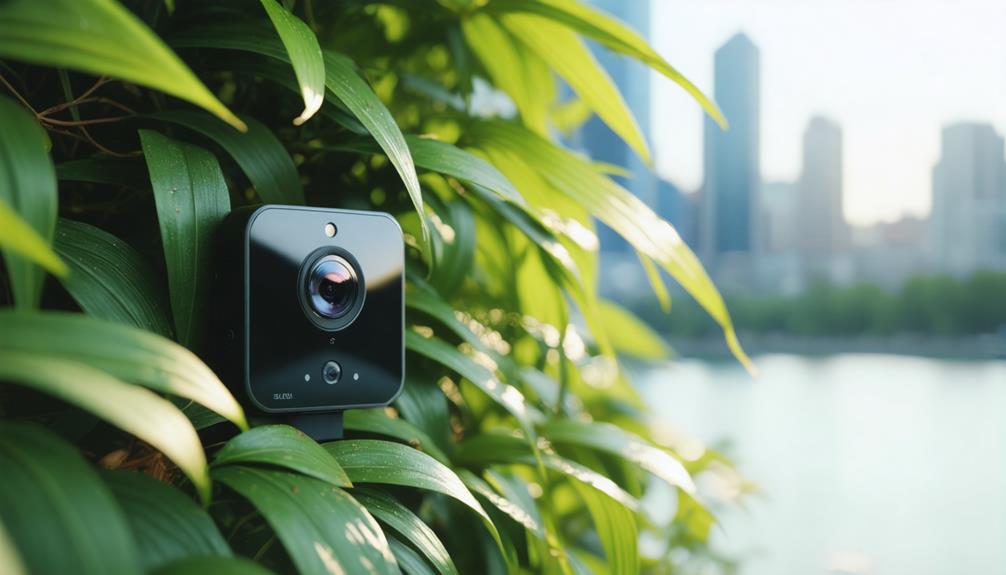
Brainstorm Security Shop

For Orders Over $199

On Any Of Our Products

Details On Refund Page
As you consider the security of your warehouse, have you explored the potential of motion detection cameras? These devices aren’t just about recording break-ins; they’re about preventing them by offering real-time alerts and data that can be crucial in a high-stakes situation. Whether you’re dealing with theft, unauthorized access, or simply monitoring deliveries and operations, the right setup can transform how you manage security. But with various technologies available, such as infrared and video analytics, how do you choose the best type for your needs? Let’s examine how these cameras work and why they might be the missing piece in your security strategy.
Motion detection technology serves as the backbone for enhancing security in environments like warehouses. As you delve into how this system operates, you’ll find that it’s largely driven by sophisticated motion detection algorithms. These algorithms are designed to accurately discern between different types of movement, ensuring that only relevant motions—like those of an intruder—are flagged and reported.
Thanks to sensor technology advancements, the accuracy and reliability of these systems have significantly improved. You’re dealing with sensors that can detect the slightest movement, even in low light conditions. This isn’t just about catching a figure moving across the room; it’s about understanding the context of that movement to reduce false alarms and enhance security efficiency.
Moreover, these advancements allow for a more seamless integration into your existing security infrastructure. Whether you’re upgrading your system or setting up a new one, you’ll find that modern motion detectors are easier to install and maintain.
They’re also customizable, which means you can set them up to meet the specific security needs of your warehouse. This isn’t just about technology; it’s about creating a safer, more secure environment for your assets and employees.
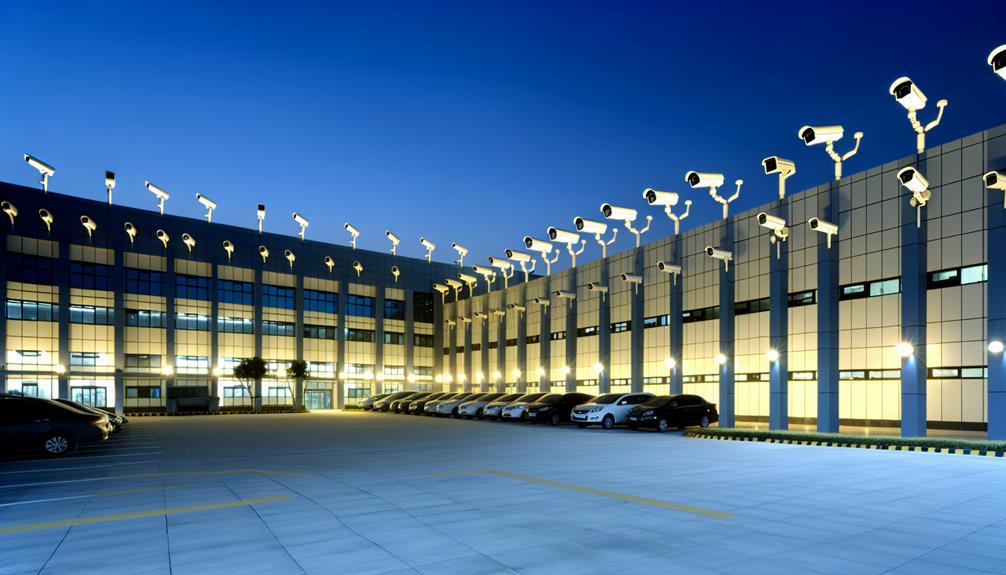
You’ll find that motion detection cameras come in various forms.
We’ll explore how infrared cameras operate, assess the benefits of video analytics, and compare wireless versus wired setups.
Each type offers unique advantages tailored to different warehouse needs.
Over the years, infrared cameras have become a popular choice for motion detection in warehouse settings.
These devices leverage infrared technology to capture images even in low light conditions, making them ideal for monitoring areas that are dim or completely dark.
You’ll find that unlike standard cameras, infrared ones don’t rely on visible light. Instead, they use thermal imaging to detect heat emitted by objects or people, allowing them to capture clear images regardless of the lighting.
This capability is particularly useful in a warehouse environment where you need constant surveillance.
Irrespective of the time, whether at night or during early mornings when natural light is minimal, these cameras ensure continuous monitoring.
The technology behind these cameras detects any unusual heat patterns caused by intruders and immediately alerts the security system.
Video analytics technology has revolutionized the way warehouses manage security by enhancing the functionality of motion detection cameras. With advanced video analysis techniques, you’re not just capturing footage; you’re gaining insights that help prevent theft and optimize operations.
These systems employ sophisticated motion tracking algorithms that can distinguish between different types of movements. This means you’ll be alerted only when it matters, reducing false alarms and ensuring that security personnel can focus on genuine threats.
These cameras come in various forms, each suited to particular needs. You’ll find models designed for wide area coverage, offering panoramic views to monitor large sections of your warehouse with a single device.
Others are tailored for specific points of interest, such as entry points or sensitive areas, where precision is crucial. The integration of video analytics allows these cameras to not only record but also analyze motion in real time, identifying unusual patterns that could indicate a security breach.
When choosing motion detection cameras for your warehouse, deciding between wireless and wired options is crucial. Both types offer unique advantages, but your choice will largely depend on your specific needs and the layout of your warehouse.
Wireless cameras provide flexibility and easier installation. You won’t need to run cables throughout your facility, which can save on installation costs and time. They’re particularly useful in large spaces where wiring is impractical, or in rented spaces where modifications are restricted.
However, wireless reliability can sometimes be a concern due to interference from other devices and structural impediments that might block signal strength.
On the other hand, wired cameras are known for their wired stability and consistent performance. They’re directly connected to your network via cables, which generally allows for a more stable and reliable signal compared to wireless. This can be especially important in environments that require uninterrupted surveillance.
The downside is the installation process, which can be more complex and costly, particularly in large or complex warehouse layouts.
Ultimately, you’ll need to weigh these factors based on your warehouse’s specific requirements. Consider the long-term benefits of stability and reliability against the flexibility and ease of installation before making your decision.
Installing motion detection cameras in your warehouse can significantly enhance security and operational efficiency.
These cameras serve as your eyes when you’re not around, providing a myriad of benefits that not only protect your assets but also streamline your operations.
Here’s a concise rundown of key advantages:
When installing motion detection cameras in your warehouse, it’s crucial to understand the best spots for camera placement to cover all critical areas effectively.
You’ll also need a comprehensive technical setup guide that ensures each component functions optimally.
Let’s explore how you can achieve this to enhance the security and efficiency of your warehouse operations.
To maximize the effectiveness of motion detection cameras in your warehouse, it’s crucial to consider their placement strategically. The right camera angles and careful attention to blind spots can significantly enhance the security of your space. Here’s how you can ensure you’re covering all your bases:
After mapping out where your cameras should go for optimal coverage, focus next on the technical aspects of setting them up properly.
You’ll need to start with camera calibration techniques to ensure that each camera captures clear and accurate images. Calibration involves adjusting the focus and angle of the camera to match the specifics of your warehouse environment. This step is crucial; if a camera’s not calibrated correctly, you might end up with blurry images or incorrect motion detection, which can compromise your security.
Next, you’ve got to tackle sensor sensitivity adjustments. Each camera’s sensitivity settings determine how responsive it’s to motion. Set it too high, and you’ll get too many false alarms. Too low, and you might miss critical movements.
Start with a moderate setting and test by walking through the camera’s field of view during various times of the day. Adjust as necessary based on the feedback from these tests.
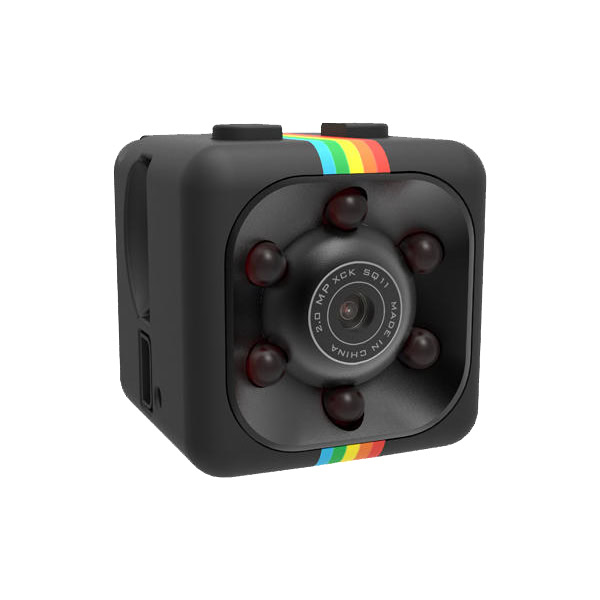
Why consider the placement of motion detection cameras as the cornerstone of your warehouse security strategy? Getting it right not only enhances the effectiveness of your cameras but also maximizes your overall security.
Here’s how you can optimize camera placement to ensure comprehensive coverage and integration with your warehouse’s workflow:
Integrating motion detection cameras with your existing security systems amplifies your warehouse’s defense capabilities. By ensuring system compatibility, you’re setting up a seamless operation that can communicate across different platforms, enhancing the overall effectiveness of your security measures. This integration allows for centralized monitoring, giving you the power to oversee all security aspects from a single point.
You’ll find that when motion detection cameras are correctly integrated, they don’t just work in isolation; instead, they contribute to a network of devices that support each other. For example, if a camera detects unauthorized movement, it can trigger alarms or lock down certain areas automatically, depending on your system setup. This kind of synergy not only improves response times but also heightens the preventative potential of your security strategy.
Furthermore, with everything connected, you can receive real-time alerts and updates. This ensures you’re always in the know, whether you’re on-site or managing remotely.
The integration also facilitates easier maintenance and upgrades, as compatibility across systems means fewer technical hurdles. So, investing in integration not only enhances security but also simplifies management, making your life a bit easier.
Investing in motion detection cameras often involves considering various costs that can impact your budget.
It’s crucial to weigh these expenses against the security benefits they provide. Let’s break down the key cost considerations to ensure your budget allocation is optimized.
Here are the main expenses you’ll need to consider:
In your cost comparison, consider not only the immediate expenses but also long-term operational costs.
This holistic view will help you make an informed decision that aligns with your security needs and budget constraints.
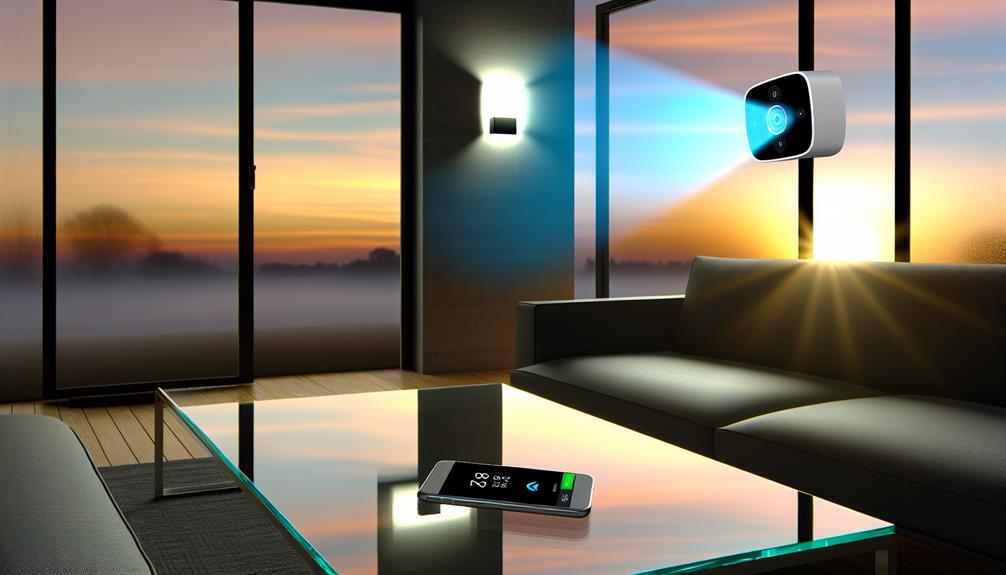
When installing motion detection cameras in your warehouse, it’s crucial to navigate the legal and privacy issues that arise. You’re stepping into a zone where data protection laws and liability issues play a significant role. To stay on the right side of the law, it’s essential that you understand regulatory compliance thoroughly. This includes ensuring all surveillance policies are transparent and clearly communicated to your team.
Firstly, securing employee consent is non-negotiable. You must inform your employees about what you’re monitoring, why, and how the footage will be used. This transparency fosters trust and reduces concerns about privacy invasions. Remember, ethical considerations should guide every decision you make regarding surveillance.
Moreover, you must handle footage retention with care. There are specific regulations about how long you can store surveillance footage before it must be securely deleted. Failing to comply can lead to severe penalties.
Lastly, keep in mind that monitoring transparency isn’t just a legal requirement but also a practice that can shield you from potential liability issues. Clear, consistent policies on camera use, data protection, and footage access are crucial. They ensure everyone knows where they stand, thus minimizing misunderstandings and enhancing security measures in your warehouse.
Regular maintenance and timely upgrades of your motion detection cameras are essential to ensure they remain effective in safeguarding your warehouse. Ignoring this could lead to system failures when you least expect them, compromising your security measures.
Here’s a simple guide to keeping your system up-to-date and functioning optimally:
This isn’t just about fixing problems; it’s about preventing them.
This keeps your system compatible with the latest security protocols and software.
This can range from software to the physical cameras themselves.
Regular training sessions can help your team manage the system more effectively and spot potential issues swiftly.
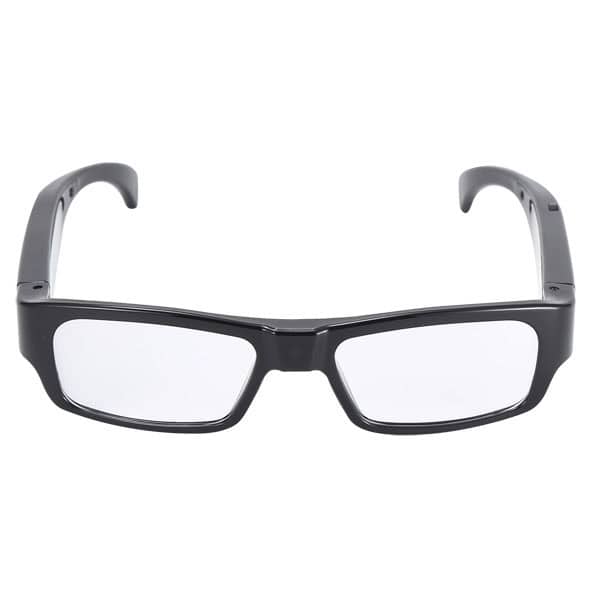
Yes, your pets can indeed trigger false alarms if they’re in areas monitored by these cameras.
Since motion detection systems aren’t always able to distinguish between a pet and a human, your pet’s movement could set off an alert.
To enhance pet safety and reduce false alarms, consider adjusting the camera’s sensitivity settings or using pet-immune sensors.
This way, you’ll keep the area secure without unnecessary disruptions caused by your furry friends.
You’ll find that weather conditions significantly impact the performance of outdoor motion detection cameras.
Extreme temperatures, rain, and fog can alter camera sensitivity, leading to false alarms or missed detections.
To minimize these issues, it’s crucial to choose cameras designed for all-weather resistance and adjust their sensitivity settings according to seasonal changes.
This way, you ensure reliable monitoring regardless of weather fluctuations, keeping your property secure.
Yes, motion detection cameras are effective in total darkness.
They use infrared technology to detect movement, allowing you to monitor areas without visible light. This technology senses temperature differences emitted by objects, turning them into a visual image.
With night vision capabilities, these cameras provide clear footage even in pitch-black conditions. You’ll be able to see and record any activity, ensuring nothing goes unnoticed, no matter how dark it gets.
Yes, motion detection cameras can record audio, but it depends on the specific model you choose. Some are equipped with built-in microphones that capture sound, enhancing their surveillance capabilities.
However, you should be aware of privacy laws regarding audio recording, as they can be stricter than those for video. Always check local regulations to ensure you’re not violating privacy rights when using cameras with audio recording features in any setting.
The lifespan of a typical motion detection camera largely depends on its sensor technology and how well you maintain it.
Generally, you can expect your camera to last anywhere from 5 to 7 years. Regular updates to the firmware and proper handling can extend this life.
Keep an eye on environmental factors and consider protective measures to shield your camera from extreme conditions, which can significantly impact its functionality and longevity.
You’ve seen how motion detection cameras can transform your warehouse’s security. By choosing the right type and integrating them with other systems, you’ll boost efficiency and safety while cutting costs. Remember to install them strategically and stay mindful of legal and privacy concerns. Regular maintenance and upgrades will keep your system effective. Investing in these cameras not only protects your assets but also fosters a safer, more productive workplace environment.
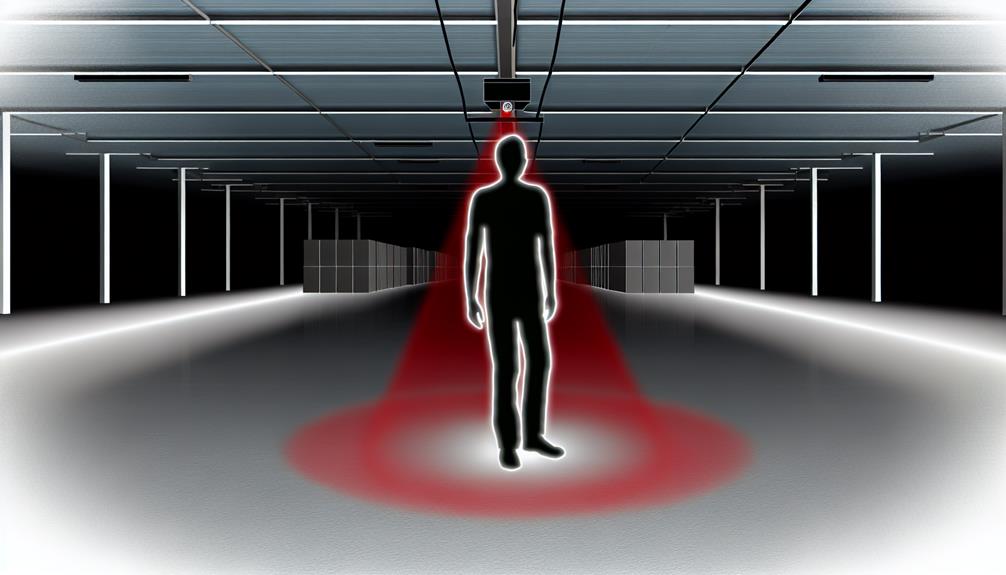
Brainstorm Security Shop
1867 Caravan Trail
Ste 105
Jacksonville, FL 32216
Call us toll free: (800) 859-5566